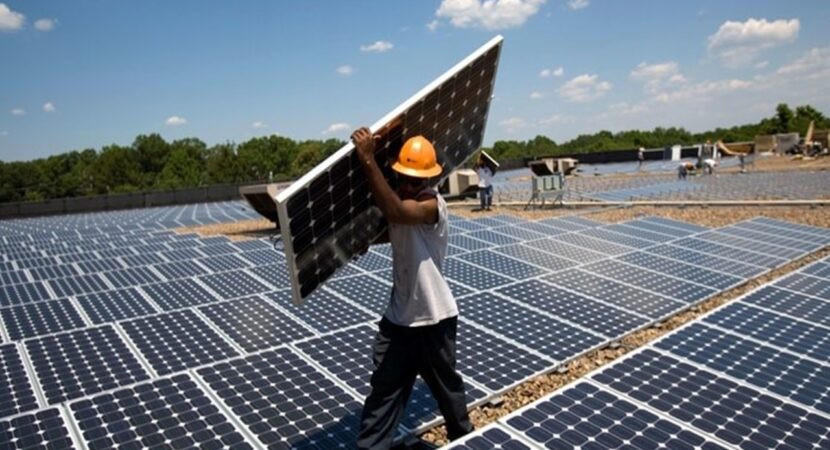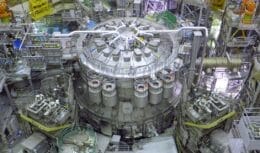
The energy crisis in Brazil affects the pockets of Brazilians, who are experiencing constant increases in their electricity bill (Aneel's increase of 52% in the extra fee on the electricity bill is already valid, going to R$ 9,49 per 100 kWh) and there is a possibility of blackouts.
Looking at the problem without presenting solutions does not help much, and that is why solar energy has been one of the main topics of discussion and investment in Brazil. According to Absolar, the source brought more than R$ 46 billion in new investments, in addition to 270 jobs in less than ten years. Minas Gerais is in first place in the ranking of distributed generation, with 9.154 generating plants, followed by Rio Grande do Sul, which today has 82.619,22 kW installed, even surpassing the state of São Paulo, which occupies the third position from the list. Soon after are the states of Paraná, Santa Catarina, Ceará, Rio de Janeiro, Mato Grosso, Goiás and Pernambuco.
Read also
- Oil multinational Wood calls today (21/07) for 300 job openings for elementary, middle, technical and higher education professionals to work on its new project in Brazil
- Subsea 7 opens vacancies in RJ for candidates with no experience to start working in September, in its technical internship program in the oil and gas industry
- Helper, Turner, Mechanic, Welder, Engineer and many primary, secondary, technical and higher education positions called for job openings in RJ and MG, yesterday (20/07), by the Brazilian Infrastructure Services Company
- Millionaire offer makes Brazil's largest oil company give up the Papa-Terra oil field and further reduce its presence in the Campos Basin
- Curriculum vitae and work portfolio in hand to apply for URGENT job vacancies and work in August on the construction works of the Wind Complex in Bahia
In the midst of the worst water recession in the last 90 years, the authorities are debating between having blackouts or energy rationing – a possibility put into practice in the 2001 crisis. hospitals due to equipment disruption; stoppage of industrial production – and lack of products; deficiency in communication processes in general – no internet and telephony; and the impossibility of people paying their bills and taxes.
Energy crisis affects Minas Gerais, Goiás, Mato Grosso do Sul, São Paulo and Paraná. And all of Brazil is already paying more on its electricity bill
Five Brazilian states that are under maximum emergency alert, according to the federal government: Minas Gerais, Goiás, Mato Grosso do Sul, São Paulo and Paraná. And all of Brazil is already paying more on its energy bill. All because thermoelectric plants, which use gas and oil and therefore have more expensive generation, are activated. To get an idea of the cost, since June 1st, the activation of the red flag, on level 2, represents R$ 6,24 per 100 kWh. And the National Electric Energy Agency (Aneel) decided to increase the extra fee by 52% on the electricity bill, going to R$ 9,49 per 100 kWh.
The justifications behind this situation, which already affects inflation and threatens economic growth, are the lack of rain, flaws in the planning and operation of the electrical system, as well as in the energy pricing model. However, as taught by the American inventor and mechanical engineer Henry Ford, “don't find a defect, find a solution”, the key to this problem may be closer than it seems. “It is in photovoltaic energy”, guarantees the partner and owner of Entec Solar, a company specialized in the field, Tiago Sarneski, praising that, at the end of May, solar energy reached the mark of 9 thousand megawatts of installed power.
According to a recent mapping by the Brazilian Association of Photovoltaic Solar Energy (Absolar), the state of Minas Gerais is in first place in the ranking of distributed generation, with 9.154 generating plants; 938,1 megawatts in operation in homes, businesses, industries, rural properties and public buildings, accounting alone for 18,1% of the entire Brazilian photovoltaic energy park. The “silver medal” goes to Rio Grande do Sul – where the demand for distributed generation grows the most –, which today has 82.619,22 kW installed, surpassing even the state of São Paulo, which occupies the third position from the list, followed by the states of Paraná, Santa Catarina, Ceará, Rio de Janeiro, Mato Grosso, Goiás and Pernambuco.
Solar energy surpassed the entire sum of the capacity of coal-fired thermoelectric plants, nuclear power plants and brought more than R$ 46 billion in new investments, generating more than 270 thousand jobs in Brazil!
“And the reasons to celebrate do not stop there: reaching the 9 megawatt mark, the energy of the king star is now greater than the entire sum of the capacity of coal-fired thermoelectric plants and even nuclear power plants, which represent 5,6 gigawatts”, enthuses Sarneski.
According to Absolar, since 2012 the source has brought more than R$46 billion in new investments and generated more than 270 jobs.
In the view of the expert entec Solar, the moment is very opportune to address the subject for several reasons: the first of them is the risk of blackout, followed by saving money in the pocket of Brazilians. “Then, because Bill No. 5.829, of 2019, which will establish the legal framework for photovoltaic energy in the country, democratizing access to solar energy, is about to be analyzed in the National Congress.”
Finally, he recalls that there are many advantages of solar energy, such as “the low environmental impact, its simple installation, its irrelevant cost in relation to its useful life (more than 25 years) and the fact that it can be used as a substitute of conventional electrical energy.












Roberta, go back to school, please! No…
Premonition: whoever wrote this article is a…
The FA has the constitutional function of…
I'm happy when I see reports like this, it's...
This ship is subordinate to the Command of…
A pick-up can make any dream come true…
Nothing to do with it, it’s a transmission contract,…
*What are the conditions governing this agreement…